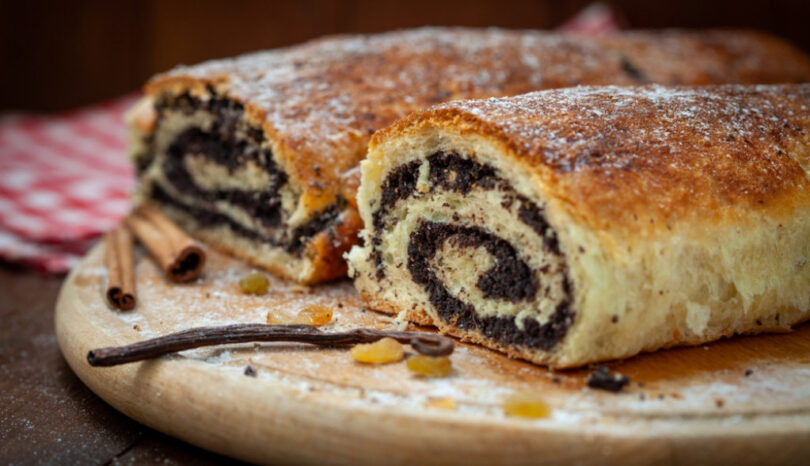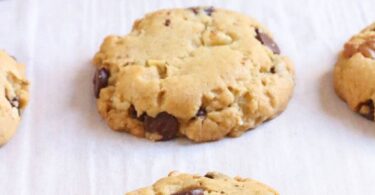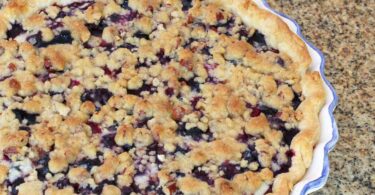Easy poppy seed roll (potica, povitica) from the Balkans. This strudel boasts several names, and the same moist, sweet, succulent taste. It will have you reconsider chocolate!
Potica, Povitica or Poppy Seed Roll?
(Please note potica, povitica, and poppy seed roll will be used interchangeably in the text.)
Potica is a fantastic pastry usually stuffed with either poppy seed or walnut filling. Today we’re gonna stuff it with a filling made with ground poppy seeds, sugar, semolina, and milk. Potica tastes tart, gritty, and sweet at once.
Potica goes by different names in the Balkans.
- In Slovenia it goes by makova potica
- In Croatia by povitica or povetica s makom,
- In Serbia and Montenegro this is štrudla s makom, and
- In Bosnia and Herzegovina they call it makovnjača.
There are probably more names, and even the shapes can differ slightly. (For example, Slovenian makova potica is often made with thinner dough that has more layers. It’s also usually baked in a bundt cake pan.)
Regardless of whether you call it potica, povitica, or poppy seed strudel, each stands for the same rich pastry overflowing with succulent poppy seed filling.
Ingredient and Method Notes
Dough:
Many pastry doughs are milk-based. It gives the final product perfect soft doughiness. However, these pastries are rock hard after a short period of time.
For this reason, we make potica dough with water, with a method for making dough similar to pita . You let the dough rest and breathe for a while, and then you can stretch it to the stars. Or leave it in the fridge until you’re ready to work it.
For best results don’t make any dough substitutions in the recipe.
Filling:
Potica filling is made with milk, poppy seed, semolina, sugar, and vanilla extract. If you’re no fan of vanilla you can skip it. Oh, and, poppy seeds need to be finely ground!
The trick for a great poppy seed filling is not to over-fill or under-fill the roll. Potica tastes best when there is a nice ratio between dough and filling.
A good poppy seed roll requires perfect grit with perfect sweet.
How Do You Use Poppy Seeds?
- Grind them! This releases their oil and intensifies the flavor. If you don’t, your potica will be too gritty and bitter, regardless of how much sugar you add. Use a coffee bean or spice grinder, and grind in small batches. (Food processors and blenders aren’t your friends with seeds so small.)
- 4:1 Ratio! If you insist on more grit in your potica, then, if you must, mix ground and non-ground seeds at a 4:1 ratio.
- Unusual Filling Ingredient! In addition to poppy seeds, milk, sugar and vanilla, there is an ingredient you won’t find in every poppy seed roll recipe. That’s semolina! It helps the filling puff up and soften at the same time.
- Nursing? Skip potica and make a walnut roll instead. There is a component in poppy seeds that causes colic (cramps) in babies.
- Drug tested? Don’t eat poppy seeds around testing time. They may contain extracts of morphine and opium as those are made from unripe poppy seed capsules.
Serving, Storing and Freezing
- Serving: Although a dessert, potica can easily become your entire dinner. It’s hard to stop eating it. Best if you double the recipe from start. It goes great with a warm mint tea , coffee, or a glass of milk.
- Storing: If by some crazy chance you don’t eat the entire strudel right away, fold it in saran wrap and leave in cupboard or bread box overnight. Reheat in oven. Potica lasts 3-4 days.
- Freezing: Nope!
Ingredients
Dough:
- 1-2 tablespoons water
- 1 teaspoon baker’s yeast
- 2 tablespoons sugar
- 17-18 ounces all purpose flour plus a more for dusting
- Pinch of salt
- 1.5 teaspoons baking powder
- 4 ounces oil
- 8.5 ounces lukewarm water
- 2 tablespoons water to grease the dough
- 1 tablespoon melted butter to grease the dough
- 4-6 tablespoon confectioner’s sugar after baking








Leave a Comment